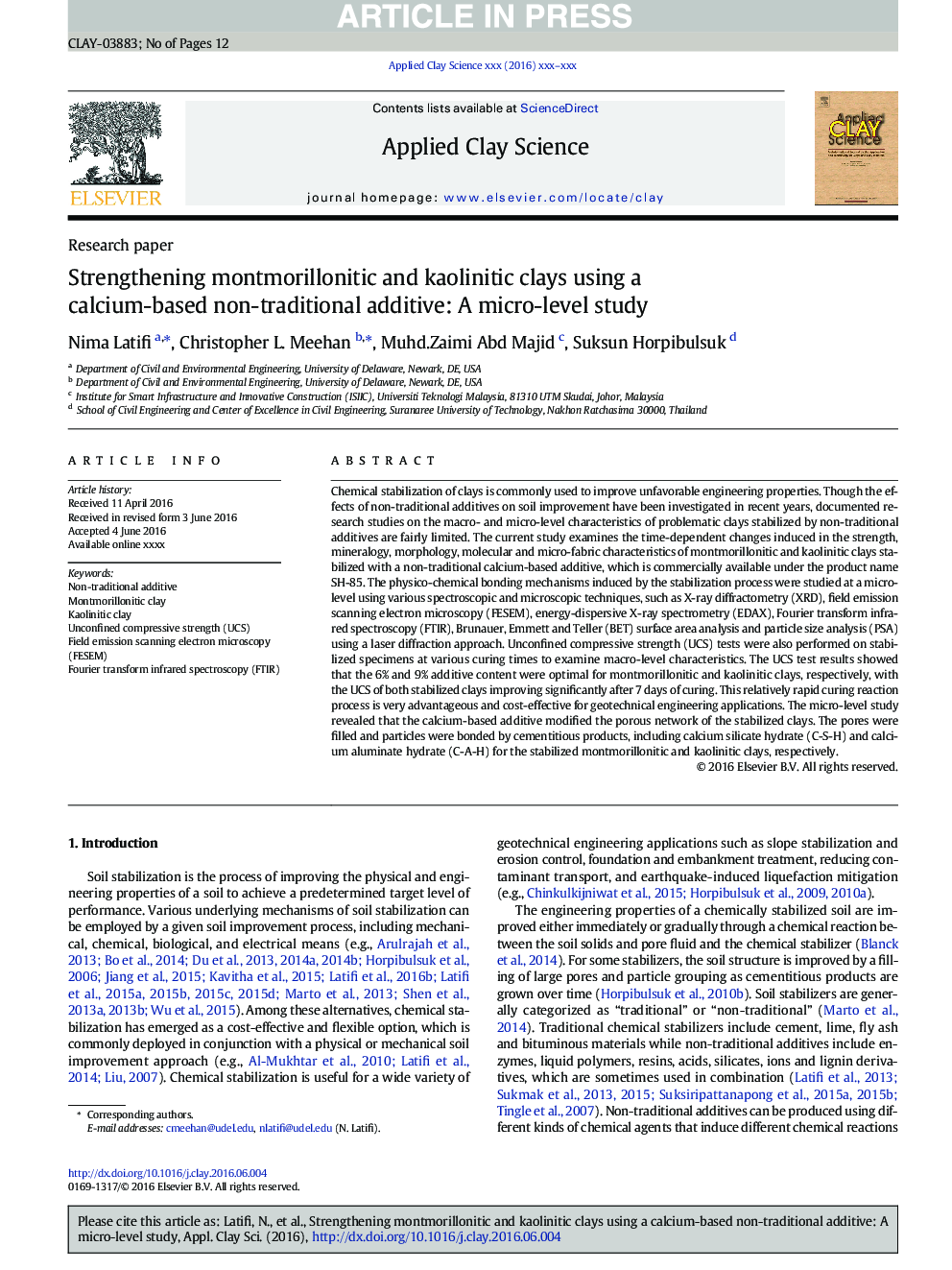| Article ID | Journal | Published Year | Pages | File Type |
|---|---|---|---|---|
| 5468748 | Applied Clay Science | 2016 | 12 Pages |
Abstract
Chemical stabilization of clays is commonly used to improve unfavorable engineering properties. Though the effects of non-traditional additives on soil improvement have been investigated in recent years, documented research studies on the macro- and micro-level characteristics of problematic clays stabilized by non-traditional additives are fairly limited. The current study examines the time-dependent changes induced in the strength, mineralogy, morphology, molecular and micro-fabric characteristics of montmorillonitic and kaolinitic clays stabilized with a non-traditional calcium-based additive, which is commercially available under the product name SH-85. The physico-chemical bonding mechanisms induced by the stabilization process were studied at a micro-level using various spectroscopic and microscopic techniques, such as X-ray diffractometry (XRD), field emission scanning electron microscopy (FESEM), energy-dispersive X-ray spectrometry (EDAX), Fourier transform infrared spectroscopy (FTIR), Brunauer, Emmett and Teller (BET) surface area analysis and particle size analysis (PSA) using a laser diffraction approach. Unconfined compressive strength (UCS) tests were also performed on stabilized specimens at various curing times to examine macro-level characteristics. The UCS test results showed that the 6% and 9% additive content were optimal for montmorillonitic and kaolinitic clays, respectively, with the UCS of both stabilized clays improving significantly after 7Â days of curing. This relatively rapid curing reaction process is very advantageous and cost-effective for geotechnical engineering applications. The micro-level study revealed that the calcium-based additive modified the porous network of the stabilized clays. The pores were filled and particles were bonded by cementitious products, including calcium silicate hydrate (C-S-H) and calcium aluminate hydrate (C-A-H) for the stabilized montmorillonitic and kaolinitic clays, respectively.
Keywords
Related Topics
Physical Sciences and Engineering
Earth and Planetary Sciences
Geochemistry and Petrology
Authors
Nima Latifi, Christopher L. Meehan, Muhd.Zaimi Abd Majid, Suksun Horpibulsuk,
